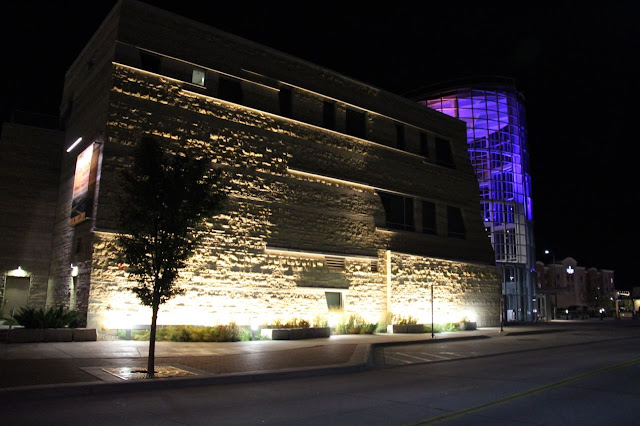let us crawl backwards
towards a time of coves and caves
and live in a hole
This book, first published back in 1977, is considered a classic in the architectural oeuvre.
I'm not sure why. The title comes from how the book is organized, a listing of 253 observations--numbered patterns--of how people like to live, at least from the perspective of the authors. A single pattern may tie into or be associated with several others. Each pattern starts off with a decree followed by a supporting argument about why it is an architectural truth. This is all well and good except that these architectural truths seem to have been written by extra grumpy and exceedingly hairy hobbits fixated on medieval rat-in-a-hole architecture. I half expected to find a pattern titled:
- Dungeons should be located between four and seven rooms from your master bedroom, far enough away that the screams of your enemies don't keep you up at night, yet close enough that their muffled shriekings lull you to sleep.
Here are some examples of patterns:
- There is abundant evidence to show that high buildings make people crazy.
- Isolated buildings are symptoms of a disconnected sick society.
- Arrange all toilets over a dry composting chamber. Lead organic garbage chutes to the same chamber, and use the combined products for fertilizer.
- The presence of children in a family often destroys the closeness and the special privacy which a man and wife need together.
- Bedrooms make no sense. [this seems to conflict with the previous one...]
- A building in which the ceiling heights are all the same is virtually incapable of making people comfortable.
- On no account use standard doors or windows. Make each window a different size, according to its place.
- People like to watch the street.
- All people have the instinct to decorate their surroundings.
- Set up processes which encourage groups of 8 to 12 people to come together and establish communal households.
- Do everything possible to make the traditional forms of rental impossible, indeed, illegal.
There are, however, patterns that make sense, at least to me:
- Buildings must always be built on those parts of the land which are in the worst condition, not the best. [sorry Fallingwater...]
- Unless the spaces in a building are arranged in a sequence which corresponds to their degree of privateness, the visits made by strangers, friends, guests, clients, family will always be a little awkward.
- If the right rooms are facing south, a house is bright and sunny and cheerful; if the wrong rooms are facing south, the house is dark and gloomy. [Northeastern bias expressed here...]
- Arriving in a building, or leaving it, you need a room to pass through, both inside the building and outside it. This is the entrance room.
- When they have a choice, people will always gravitate to those rooms which have light on two sides, and leave the rooms which are lit only from one side unused and empty.
- Balconies and porches which are less than six feet deep are hardly ever used.
- There is no substitute for fire.
- Except in very large rooms, a door only rarely makes sense in the middle of a wall. It does in an entrance room, for instance, because this room gets its character essentially from the door. But in most rooms, especially small ones, put the doors as near the corners of the room as possible.
- Dark and gloomy kitchens are depressing. The kitchen needs the sun more than the other rooms, not less.
- The slab is the easiest, cheapest, and most natural way to lay a ground floor.
- Surround any natural outdoor area, and make minor boundaries between outdoor areas with low walls, about 16 inches high, and wide enough to sit on, at least 12 inches wide.
- Make a place in the house, perhaps only a few feet square, which is kept locked and secret; a place which is virtually impossible to discover--until you have been shown where it is; a place where the archives of the house, or other more potent secrets, might be kept.
- If there is a beautiful view, don't spoil it by building huge windows that gape incessantly at it. Instead, put the windows which look onto the view at places of transition--along paths, in hallways, in entry ways, on stairs, between rooms. If the view window is correctly places, people will see a glimpse of the distant view as they come up to the window or pass it; but the view is never visible from the places where people stay.
- Houses with smooth hard walls made of prefabricated panels, concrete, gypsum, steel, aluminum, or glass always stay impersonal and dead.
- A first principle of construction; on no account allow the engineering to dictate the building's form.
- When plate glass windows became possible, people thought that they would put us more directly in touch with nature. In fact, they do the opposite. [here they propose multi-paned glass]
- The perfectly crystalline squares and rectangles of ultra-modern architecture make no special sense in human or in structural terms. They only express the rigid desires and fantasies which people have when they get too preoccupied with systems and the means of their production.
The inspiration for reading this book was the mention of it at a water meeting held at Wingspread. Developing a pattern language for water conservation, a concise summary of what we (think) we know can be useful, even if some (if not everyone) disagrees. At least a list of thoughts like this allow ideas to percolate to help you decide what are the best patterns for you and your people.
































































